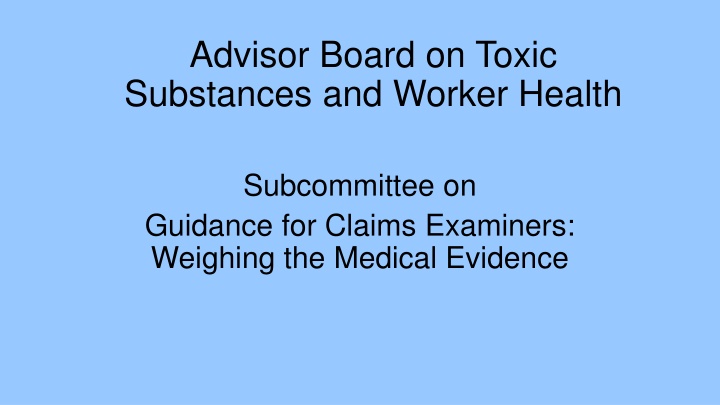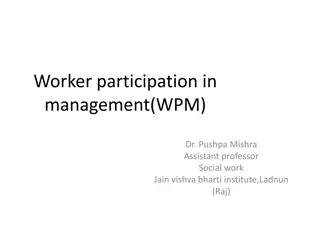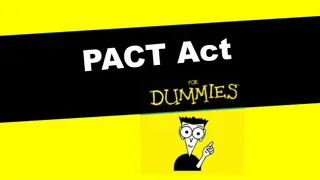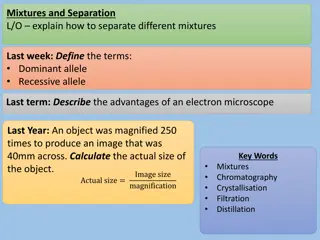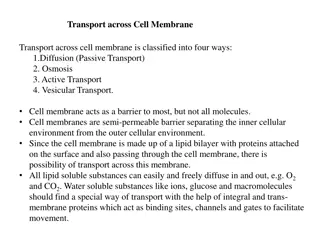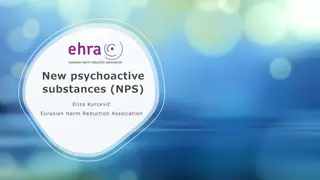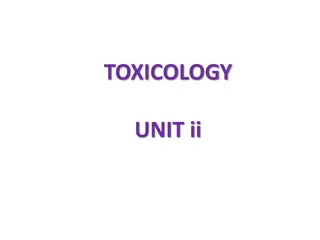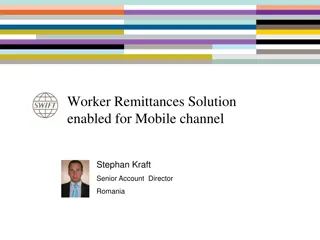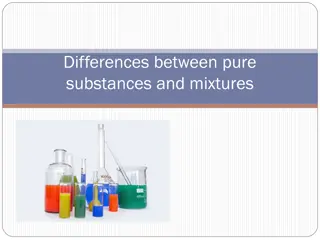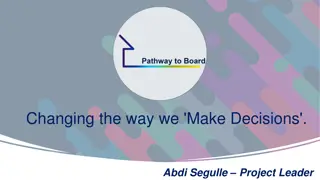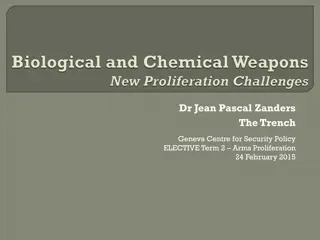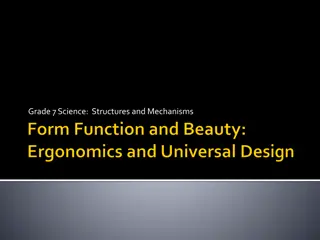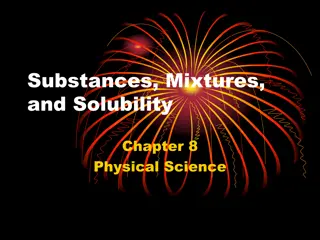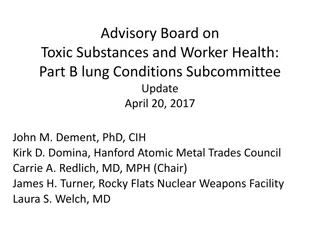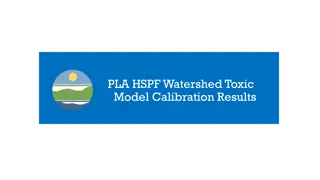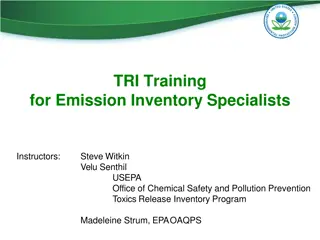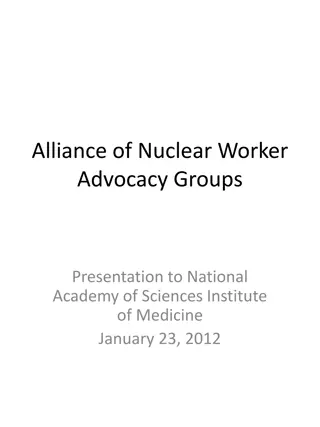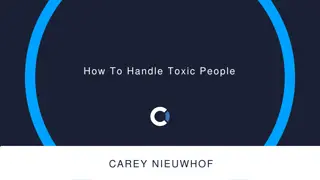Advisor Board on Toxic Substances and Worker Health
Subcommittee tasked with reviewing and evaluating materials to assist claims examiners in adjudicating medical claims related to toxic substances. They meet regularly to assess training materials, medical evidence, and make recommendations for improving the claims process.
Download Presentation

Please find below an Image/Link to download the presentation.
The content on the website is provided AS IS for your information and personal use only. It may not be sold, licensed, or shared on other websites without obtaining consent from the author.If you encounter any issues during the download, it is possible that the publisher has removed the file from their server.
You are allowed to download the files provided on this website for personal or commercial use, subject to the condition that they are used lawfully. All files are the property of their respective owners.
The content on the website is provided AS IS for your information and personal use only. It may not be sold, licensed, or shared on other websites without obtaining consent from the author.
E N D
Presentation Transcript
Advisor Board on Toxic Substances and Worker Health Subcommittee on Guidance for Claims Examiners: Weighing the Medical Evidence
Members of Subcommittee Victoria Cassano, Chair Les Boden Steve Markowitz Duronda Pope Ken Silver Faye Vlieger
Task: Review and evaluate and make recommendations pertaining to: the materials available to assist CE s in determining the development and adjudication of medical claims. the logic process used by the CE s in determining what medical information was valid and what was not the training materials available on specific toxicants outside of the SEM and make recommendations
Prior Meetings First Meeting: 12 July 2016 Second meeting: 13 September 2016 Full Committee: Based on our review of the information we made a recommendation to the full committee that the entire case files should be sent to the IH and/or CMC when a review is requested We also asked to review Part E claims and that we receive the entire case files We asked to review the training materials provided to the CEs Finally, we believed it necessary to speak with claims examiners to understand how they used all the information they were given and the proves by which they made decisions
Third Subcommittee Meeting 12 December 2016 Review of the Following Training Materials: DEEOIC claims process session Developing and weighing medical evidence Developing for Beryllium disease Developing for Causation Developing for exposure Participant Guide Developing for exposure Reviewed 14 Part E cases based upon use of Template
Review of Training Documents In general believed that the training documents were excellent Noted several discrepancies between what the training documents required and what was accomplished in the district offices. Specifically states to use OHQ, SEM, CMC and IH/toxicology review to determine exposure and causation; SEM is never to be used as a sole reason for a denial ORISE, OHQ, DEMMP and Former Worker Programs all are considered acceptable sources of medical evidence States no CMC review necessary if no known exposure to a toxic substance, or no plausible scientific association between a toxin and disease How does CE know this???
Review of Training Documents, Contd States that searches of labor processes, buildings and areas should be used when a person s labor category is not listed in the SEM Before 2000 FWP records ae usable without corroboration, after EEOICPA must be corroborated with other evidence OHQ evidence must be corroborated by other evidence Only the SOAF goes to the IH/toxicologist or CMC, we have already recommended that the entire case file go. SOAF precludes the consultant from making their own findings of fact
Review of Case Files 1. Not all conditions listed on the EE1 were adjudicated even though medical evidence was provided verifying diagnosis 2. Not all exposures that could cause a particular medical condition were evaluated by the CE 3. The information in the Occupational Questionnaire was not utilized by the CE unless it is corroborated. Unclear how this is accomplished 4. Claims denied by CE using only the SEM without sending to either the IH or the CMC/ this is contrary to what the training materials instruct CEs to do. a. This is particularly troubling for worksites without a SEM 5. Some conditions either accepted or denied despite whether or not job listed in criteria for acceptance 6. CMC was only asked to comment on one or two conditions despite more conditions being claimed
Review of Case Files, Contd 7. In claim where SEM clearly supported an association between exposure and claimed medical condition- claim sent to IH anyway 8. Cases where district office commented on a known exposure/outcome relationship ( COPD), yet never asked CMC to review and claim was denied. 9. Claim where IH stated there is no evidence for an association between TCE and Parkinson s disease, which is not quite where the literature is at this point. 10. Do not consider other exposures, synergistic exposures 11. In a radiation case did not develop because claimant was not part of a Special exposure cohort.
Meeting at Seattle District Office 21 April 2017 9:00 Am to 3:00 PM 4 members of medical evidence subcommittee Representatives from district offices: Joleen Smith, Director Deputy Director and supervisors 4 cases chosen by the subcommittee because of the pertinent questions they raise 2 cases from each of 4 district offices chosen by supervisors in those offices based upon medically complex or interesting Questions about each case to be asked by subcommittee members and program representatives
Content of discussions General questions about process: How is OHQ used? How is the SOAF developed? How do the CEs determine what questions to ask the consultants? How are the Former Worker Program documents utilized? When an outside opinion is available, does it go to the CMC, how do you determine which is more probative? Questions will vary depending on case but generally: Several contentions raised on EE1; with medical evidence, why were only one or two developed ? How was the OHQ used in the case? How does the CE determine which information goes into the SOAF Why was case denied only after SEM review? Why were only some questions asked of the district medical consultant? General discussion on how to make the process better
